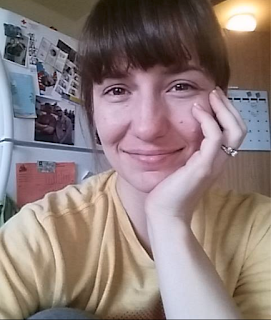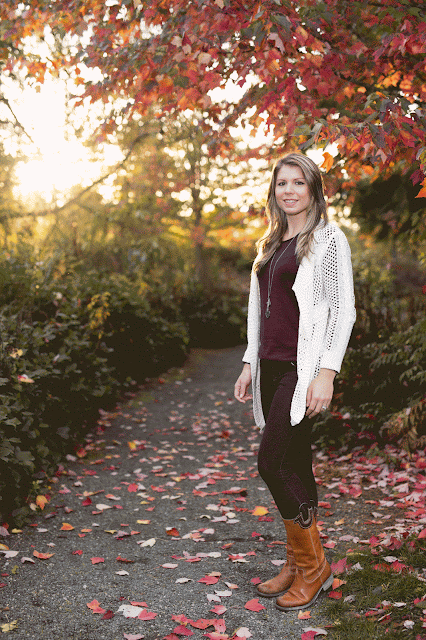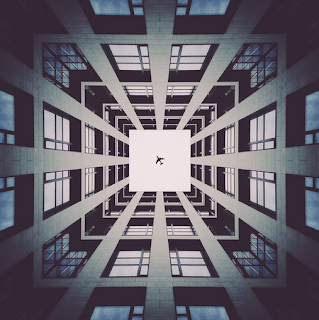Guilt.
It's a common thread among many photographers who are just starting out in business.
They don't know what to charge so they start low. Often, clients will get a shoot plus all their images and the photographer's first born child for two-hundred bucks. This is a high volume, quick turn around business model with a high level of burnout. Ask me how I know?
At the burnout stage, the photographer knows that they can't sustain that level of work for such low prices and they realize that, in order to keep providing amazing portraits, they need to raise their prices.
Cue the big, ugly guilt monster.
This nasty bugger climbs all over you and chews you up. It whispers terrible things in your ear like, "Who do you think you are? You've only been in business 6 months, how dare you think you can charge those prices?"
Another thing he's fond of saying is, "No one will pay that."
The guilt monster sits around and feeds off of your insecurities, your uncertainties and your ignorance until he's fat and firmly settled in.
So many photographers out there start their businesses with a dream of providing an amazing service by doing what they love. Somehow, they don't realize that it's OK for their business to earn money. I mean, after all, that's what a business
does. The purpose of a business is to provide a service or product to consumers and earn enough revenue to keep the business afloat and provide the business owners and employees with a livable income. If the business is very successful, they might even live a very comfortable life or...heaven forbid...get rich enough that money isn't a concern anymore.
For some reason creative business owners seem to think that those things don't apply to them. We seem to instinctively feel that the price of our service and product relates directly to our personal worth, which means that if we charge money for it, we must be greedy. Perhaps this has to do with how deeply the creative process is tied to
who we are.
I know how this feels. I've been there. I was practically giving away my time and effort but never seeing any change in my bank account. When I had someone inquire about a shoot and then not book with me, it almost broke my heart. I KNEW I could give them beautiful images. I knew they'd love the photos I took. Hearing that I was out of their price range made me feel like some kind of a failure. I thought that if they really loved my work then they'd be willing to pay $200 for a session that included their digital files. It hurt me on a personal level, as if I personally just wasn't worth their time and effort. It made me want to chase them down and give them MORE, to try to convince them that I really was worth it if they would just trust me.
The worst part is, I know that I'm not the only one to feel this way. I see it in online forums and social media groups all of the time.
Desperate photographers are asking "what do I say when they ask if they can only pay $X? My prices are so low already!"
"I know I need to start charging more but I just feel so greedy!"
"I want to try in person sales but I don't know how to price my product."
"How can I ask someone to pay this much for my work?"
"I just don't want people to think that I'm selfish or better than anyone else."
When I finally realized that I wouldn't be able to sustain my business at the prices I was charging, I began to change things. I got some great advice (you can read about that life changing process
HERE) that drastically altered the way I perceived my own value. But there was one thing that made the
biggest difference on how I viewed my pricing and how it was tied to my self worth. It removed any guilt I held about asking my future clients to pay prices that were considerably steeper than what I previously charged.
I'm going to share with you the one, sure fire way to get rid of the guilt monster once and for all.
Here is what I did, and I think that if you do the same thing you will find that pricing your business becomes a matter of fact and not a matter of guilt.
The one simple step is this: DO THE MATH.
Here's the truth: pricing your business has nothing to do with what you are worth. I know that flies right in the face of what so many people are saying right now, but it's true. Pricing your business is a numbers game, pure and simple. As long as you try to price your time and work on what you
think you're worth, there is going to be some kind of guilt associated with your price structure. Is that really what you're worth? And if people don't want to pay your prices that translates into the idea in your head that they don't think your time and talent are worth their investment and THAT hurts.
Instead, you need to do realize that what you charge has everything to do with the numbers and those have no emotional ties to you. What you charge clients has nothing to do with whether or not you are worthy and everything to do with how much money you need in order to run a business. When you realize this, the guilt will fade away and you'll be able to approach your price structure with confidence because it's not based on your own perception of your personal value but on cold, hard facts.
Start here:
How much money to you need to earn per year in order to stay alive?
Write this number down.
Make sure to include things like:
your rent/mortgage
utilities
car payments
insurance
medical
food
gas
car insurance
school costs if you have children
etc...
Basically all the things that are required in order to live. Most of the time you can guess at a number because you're surviving on it already. Let's just use $40,000 for an example.
*this number will be different for everyone*
Okay, $40,000.
Step 2.
How much money your business needs to earn in order to stay afloat?
You should include things like:
the cost of your equipment
services to keep everything clean functioning
replacement parts
studio or space rent
utilities
insurance to protect yourself and your clients
gas to get yourself to and from shoots
props if you need them
your editing software
a computer
a cell phone (if you need a separate one for business)
the cost of studio samples
how much you intend to spend on marketing
professional advancement
a personal accountant (unless you're a whiz)
possibly consulting a lawyer to make sure your contracts are solid
etc...
*this isn't an exhaustive list and will be a little bit different for every business because everyone starts out in a different situation. It may be lower for people starting out with a lot of gear and a good space, higher for people starting out with less equipment, and significantly lower if you are running bare bones.
Now, I know that sounds like a lot of stuff and it
is. But, if you want to be in business for yourself, this comes along with the territory.
Once you have that number, add it to the amount you need to pay yourself in order to live.
Lets say that the total of your income + your business income equals $70,000.
Divide that number by how many weeks you intend to work per year.
Say
you plan to work 50 weeks per year with a few days for sick leave and a
bit of vacation. You can arrange that however you need to based on what
you'd like your life to look like. Maybe you only need to work 42 weeks
per year. It's up to you. For the sake of the example though, we'll say
50, because running a business is hard and requires a lot of time.
SO, $70,000 per year divided by 50 weeks per year means that your business needs to bring in $1,400 per week (that includes the business costs and your take home.) That does NOT include state and local taxes, which need to be figured in in order to be accurate but it gives you an idea.
$1,400 per week.
How many days do you plan to work per week? 5 days? Then you need to earn $280 per day. It's up to you how your business does that. You can either work with one client every day for a $Y session fee and hope to sell them at least $X in product (where $Y +$X = $280), or you can can work with 1 or two clients per week with a higher session fee and more expensive products or anywhere in between.
Can you handle high volume or would you rather devote your time to two clients a week and have more time to handle the other aspects of your business? Ultimately you need to decide what is going to work for you, your business and your family. How much time you devote to the different aspects of running your business like marketing, book keeping, editing, ect. is all up to you and how you want your life to be, but the important part to remember is that what you charge is 100% a numbers game.
Putting a price on your time, work and product actually has nothing to do with what you're "worth" and everything to do with math. This way, if a client says "you're too expensive" you'll know it had nothing to do with you personally or the quality of your photography.
If a client says, "I really love your work but I just can't do $$. Could we just get the digitals for $?" You can say with complete honesty, that has NOTHING to do with selfishness or greediness, that you understand portrait photography is an investment but cannot meet them there. You can say that with confidence because you KNOW the numbers and you now know exactly what you need to earn in order to run a business and pay yourself. It isn't personal. You must earn a profit in order to have a functioning business and put food in your mouth, so if potential clients come along who aren't contributing to you feeding yourself, you don't need to feel guilty about not working for them. They will find a photographer within their price range and you will work with clients within yours. Aston Martin doesn't feel bad that some people want to drive a Ford, and Hyundai doesn't begrudge Ferrari their customers. They each need to earn a certain amount of money in order to thrive. Everyone walks away happy and fed.
For me, this was the most freeing thing in the world because now it wasn't a matter of whether I thought my skill was worth X amount of money. People were coming to me for their portraits so clearly they liked or connected with my work. Now it was simply about the numbers and whether or not they added up. That's why, when someone asks me what my session fee is, I can confidently say that it's $X for the session and then you'll purchase your products during the reveal. I can say this because I know what my business needs to earn in order to stay afloat.
This takes all the guess work out of it. If you want to earn more, then write a bigger number down for your yearly income and do the math accordingly. There are no rules for how much you, as a business person, are allowed to earn.
Photographer: you can either earn money doing what you love or working for someone else. Either way you are working for your pay. Neither of those decisions has anything to do with your worth as a person or an artist and everything to do with simple math.
Do the numbers add up?
**I did not cover sales or personal convictions or attitudes towards money or wealth poverty because those things are very personal issues that stem from a variety core beliefs than need to be tackled separately, and often are something that has to be readdressed and fought with as it resurfaces. These issues SHOULD be dealt with and you definitely want to admit and confront them. What I wanted to do in this post, thought, is give a straightforward tactic that will not only set you up to properly price your services, but more also sever the guilt from the concept of putting a price on your time/effort/product















































